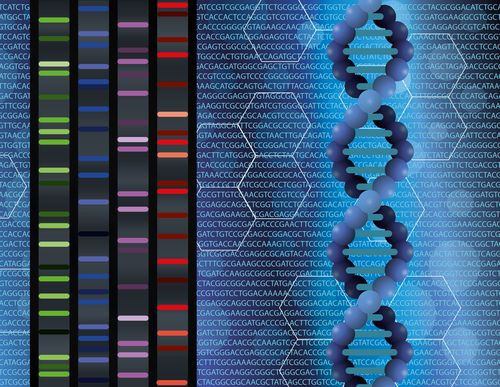Blood Cell Genetic Variants That Reduce Sickle Cell And Thalassemia Symptoms Originated In Africa

Sickle cell anemia and beta thalassemia are both inherited blood disorders occurring due to defects in the gene controling red blood cell development. But scientists have found that certain people, who experience milder symptoms of these conditions, carry two variants of this gene that enables them to make fetal hemoglobin in their bodies even in adulthood. Using worldwide genomic studies, the scientists from King's College London, found that these beneficial genetic variants have spread from Africa into nearly all human populations across the globe.
Scientists have known for some time now that elevated levels of fetal hemoglobin ameliorate the symptoms of sickle cell disease and thalassemia. Fetal hemoglobin is present in fetuses, and not long after birth the blood in babies start transitioning from the oxygen-rich fetal blood to blood containing adult hemoglobin protein.
For children with sickle cell disease, this change from fetal blood to adult blood marks the onset of disease where red blood cells behave abnormally and can clog blood vessels, leading to acute unpredictable painful spells called a sickle cell crisis which typically last a week. These spells deprive organs such as lungs, kidney, spleen, and brain of oxygen rich blood leading to their damage. In some cases, it can also lead to heart failure.
In thalassemia, insufficient hemoglobin in blood cells leads to anemia. Symptoms of beta thalassemia can range from moderate to severe, with the most severe form requiring blood transfusions for the rest of the person's life. Currently, blood transfusions and bone marrow transplants are the only "cure" for both sickle cell anemia and beta thalassemia, but the latter treatment option is only available to a small number of patients.
While people with certain ethnicities such as African, Mediterranean, Indian, and Spanish are more pre-disposed to these conditions, they are now affecting major populations across the globe. In both the UK and U.S. it is the most common genetic disorder affecting 13,000 and 70,000 to 80,000 people in these respective countries.
In this study published in the Annals of Human Genetics, scientists found that certain patients of African and South Asian descent had the ability to produce fetal hemoglobin even in adulthood and this reduced their blood disorder symptoms. These patients carried a genetic variant that controlled the red blood cell regulator gene MYB — MYB enhancer variant — on chromosome 6. The same genetically structured variant was also found in healthy individuals, even those of Northern European origin, where thalassemia and sickle cell disease are rare. This led the authors to suspect that beneficial MYB enhancer variants, which promote fetal hemoglobin in the body, are a general feature of human populations across the world and that they might have a common origin.
To check if the genetic signatures of this variant was also present in other ethnic groups; the scientists conducted a search in the public genome-wide data sets generated from world populations. They found signatures for two different types of MYB enhancer variants — HMIP-2A and HMIP-B, in major human population groups and in nearly all ethnic groups covered by the data. While both variants occur in sub-Saharan Africa in low frequencies, in most other parts of world, the alleles have combined to form HMIP-2A-B, a combination relatively common in Europe, South Asia, and China. HMIP-2B separately is common in Far-East Asian peoples and in Amerindians, illustrating their connection across the Bering Strait.
The scientists also tested if these genetic variants were present in the genome sequence of our extinct ancestors — the Neanderthals, the Denisovans, and the Great Apes, but found neither HMIP-2A nor HMIP-2B. This led them to believe that MYB enhancer variants that control the severity of sickle cell and beta thalassemia have arisen twice in modern humans, in Africa, and then spread to the rest of the world.
When and how exactly this happened is unknown, but the scientists figure it may have happened long before inherited blood disorders became prevalent. The team now plans to investigate what factors led to the distribution of the variants across the populations and if nutritional factors such as presence of iron in diet or environmental factors that affect red blood cell production had any influence.
"Patients who have milder versions of blood disorders, thanks to their ability to keep producing fetal haemoglobin, carry genetic clues that are helping us to understand the function of the genes and biological pathways involved in these diseases," said Dr. Stephen Menzel, co-author from the Department of Molecular Haematology at King's College London, in a press release.
Professor Swee Lay Thein, co-author, says despite the fact newborns in the UK can now live to adulthood, the disorder has become a chronic, debilitating disease for adults. "We hope our research will help to develop biomarkers and ultimately, preventative treatments for inherited blood disorders," he said.
Source: Menzel S, Thein S, Soler E, et al. Annals of Human Genetics. 2014.



























